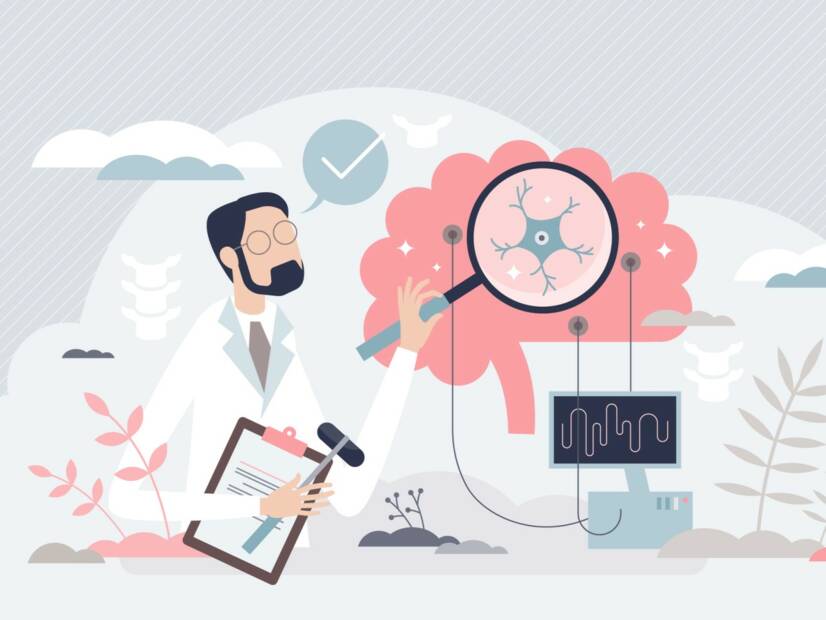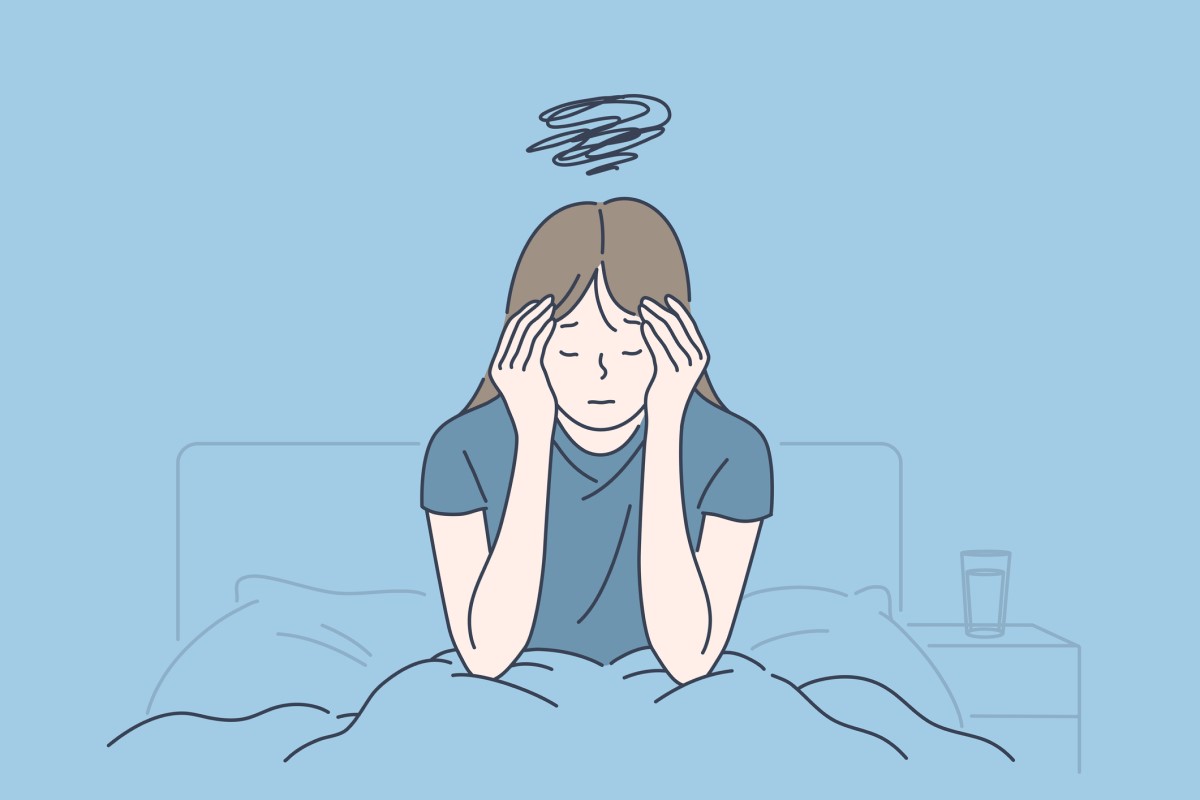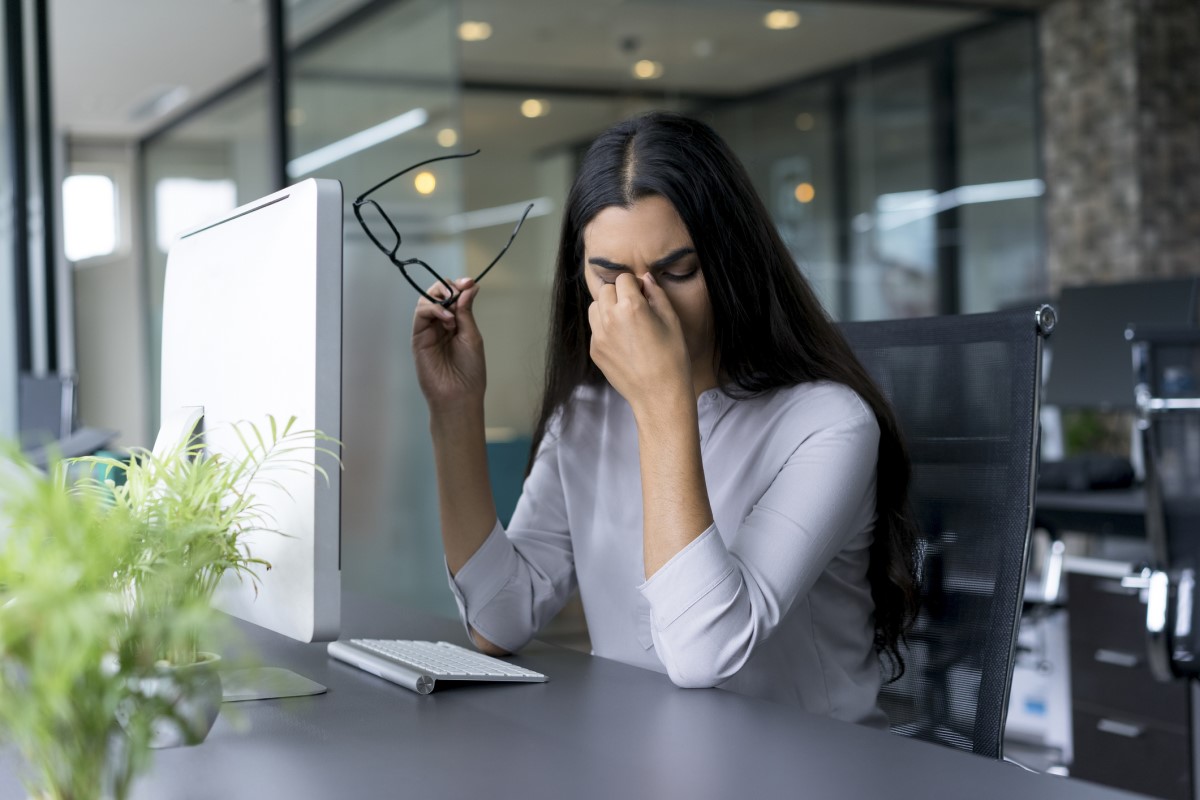- solen.sk- Headache in a GP's office, Marta Kulichová, Chronic Pain Outpatient Department, Department of Anaesthesiology and Intensive Care Medicine, MFN and JLF UK, Martin
- vpl.sk - Expert procedures in headache
- ema.europa.eu - Expert information on vaccine
- standardnepostupy.sk - Recommendations of the Slovak Society of Transfusion Medicine and Haematology on treatment after vaccination
Headache: is a GP visit enough or do I need a specialist?

Photo source: Getty images
Do you suffer from occasional headaches? When is it necessary to see a GP and when can only a specialist help?
Article content
Headache is one of the most common problems that people come to the GP's office with. The problem may be headache alone, but in some cases it is accompanied by other symptoms and together they form the symptomatology of an internal disease.
First of all, visit your GP. He will decide, on the basis of the examination, whether the problem will be dealt with by him, or whether it will be necessary to call a specialist.
When should I knock on the door of my GP's surgery?
If you only get headaches occasionally and the pain goes away on its own without taking painkillers, the pain may have a common cause.
For example, excessive stress, hunger or dehydration, fatigue, crying, a tight haircut, a tight or heavy helmet, etc.
You should be alert if the headache is recurrent, difficult to manage without analgesics, restricts your daily routine and is accompanied by other symptoms.
In this case, a visit to your GP is the best option. Even if it is one unnecessary visit, it is worth it. Do not underestimate the most important thing you have - your health.
Be aware of other circumstances that accompany, precede or follow a headache.
If you find it difficult to remember these details, start writing them down. Create a diary in which you write down everything that could be related to your pain. Even the types of food or drink you eat or drink.
This valuable information will help your doctor guess what may be causing your pain.
After a detailed interview and history is taken, it's time for an objective physical examination. The doctor will look at your spine, vision, blood pressure and its fluctuations, and may measure your glycemia or CRP. If necessary, he or she will take a blood sample. Depending on the results, he or she will treat you or refer you for further tests or to a specialist.
Not every headache is a migraine
Although we commonly call a headache a migraine, it does not mean the same thing. A migraine has its typical symptoms and is treated by a neurologist.
Migraine is one of the so-called primary headaches. It has the following basic symptoms:
- the pain is throbbing
- it is usually unilateral
- it is accompanied by nausea and vomiting
- it is accompanied by hypersensitivity to light, sounds and smells
- worsens with physical exertion
- the pain restricts you from normal daily activities
If you experience at least three of these six symptoms, your pain is probably caused by a migraine. You should see a neurologist.

Other primary headaches include the following
In addition to migraine, other primary forms include...
Primary headaches belong in the hands of a neurologist. A neurologist has the necessary range of tests and treatment options to relieve your pain and help prevent attacks.
Tension headaches
Characterized by a dull ache that is associated with fatigue. It is often preceded by stress, emotional strain, conflict or anticipation and fear of conflict.
The pain is usually bilateral. Very rarely is it localised. In the case of localised headaches, it is usually in the forehead or temple area.
Its onset is gradual and worsening. It is accompanied by unpleasant sensations of pressure, tenderness or pain in the hair of the head, stiffness of the neck muscles, a feeling of a vice around the head, sometimes even a feeling of swelling in the depths of the head.
Depression and mental restlessness are not exceptional. The pain may be chronic and difficult to manage, accompanied by sleep disturbances. It is not aggravated by physical activity or alcohol.
Vomiting and nausea are absent.
Cluster headache
Cluster headache is a so-called histamine headache.
It is a primary headache that is one of the rarest.
It affects about 0.5% of headache patients. Men lead in prevalence by a ratio of 8:1 to women.
Symptoms appear in attacks, coming on between one and eight times a day, over periods lasting weeks to months.
There are remissions of several months to several years between attacks.
These are very severe and intense pains. They always affect one side of the head, with a maximum around and behind the eye.
The pain is accompanied by secretions from the eye and nose, swelling of the nasal mucosa, scarring of the conjunctiva, Horner's syndrome, increased temperature and sweating.
Typically, they occur at night. The patient wakes from sleep, is restless, agitated, paces the room and feels anxious. One such attack lasts for a maximum of 3 hours.

Headache as a symptom of another disease
Sometimes a headache appears as a symptom of another illness and thus forms part of another symptomatology. It may be a trivial illness or a serious problem.
Most often, the following diseases are involved:
- disorders of blood vessels in the brain
- tumours in the brain
- concussion
- head trauma
- meningitis
- carbon monoxide poisoning
- inflammation of the teeth
- sinusitis
- vision problems - myopia, hyperopia
- glaucoma
- high blood pressure
- panic disorder
- and many others
Headaches due to lifestyle
Sometimes a headache is not the result of an illness, but of an unhealthy lifestyle.
However, there are also people who are hypersensitive to the histamine contained in red wine. These unfortunates get a headache after just one glass.
Certain foods can also cause problems, such as foods that are too sweet or salty or heavy and fatty.
A sleepless night with lack of sleep can also cause pain. However, sometimes they can occur while catching up on sleep during the day, so you wake up with pain after an afternoon nap.
Our body doesn't like irregular habits either. Fluctuating diets and dehydration put the body under stress.
Psychological stress, crying and fear also play a role.
Improper posture causes headaches from the spine.

Women may have headaches before or after menstruation. There are also pains after sexual intercourse, which even very often afflict the male patient population.
A special cause of headaches is the overuse of analgesics.
We cultivate such an addiction ourselves by taking painkillers too often. These are mainly drugs that combine several active substances with excipients such as caffeine or guaifenesin.
If you must take a pill, prefer simple single-ingredient preparations.
All of these causes can also be addressed by your GP.
There are symptoms that should not be ignored and should be referred to a specialist immediately.
Warning signs - red flags
- Persistent unbearable pain that the patient has never experienced before in their life
- severe headache in a patient over 50 years of age
- severe, unremitting pain that worsens and is accompanied by vomiting
- intense pain that has arisen suddenly after physical exertion
- pain accompanied by hot flushes, drowsiness, neck stiffness, meningeal symptoms
- the presence of neurological symptoms
- headache with known malignancy, HIV positivity
- ocular symptoms, papillary oedema
- patient is being treated with blood thinners, especially warfarin

For more information, see also the following articles:
Migraine: what is a headache, what are its causes, symptoms and treatment
Headache: the most common causes and how to get rid of it (Types of pain)
Headache: sometimes it is harmless, but when does it mean a serious problem?
Headache in pregnancy
Headaches in pregnancy are mainly related to hormonal changes and therefore plague moms in the first weeks.
The most serious are headaches in so-called pre-eclampsia - a condition feared by both women and doctors.
As a rule, pre-eclampsia can arise after the 20th week of pregnancy. This distinguishes it from harmless hormonal symptoms.
It is associated with high blood pressure, the finding of protein in the urine, swelling of the lower limbs and increased risk to both mother and baby.
Symptoms such as blurred or foggy vision, photophobia, nausea and vomiting are added to the headache.
Interesting information in the article:
Headachein pregnancy: what causes it and what to do about it?
Information about headaches and their treatment, even in pregnancy, in the article:
The painis not a disease, but a symptom of a disease. When can you manage it without the help of a doctor?
Headache after vaccination
Vaccination is a much discussed topic at the moment.
A large proportion of the population of developed countries have had at least one vaccination in their lifetime. Today's vaccination against COVID-19 is atypical in that people of almost all age groups, with different diseases, are vaccinated in a relatively short period of time.
Therefore, symptoms that occur after vaccination should be treated with caution, on an individual basis and with consideration of the patient's associated chronic diseases.
Headache is classified by vaccine manufacturers as a very common side effect, meaning that more than 1 in 10 people suffer from it after vaccination.
It came third in the list of adverse reactions that most bother patients. Almost 60% of people reported this experience. Only pain and tenderness at the injection site after vaccination were more common.
Systemic side effects following vaccine administration include headache, fever, chills, fatigue and nausea.
They are part of a mechanism that triggers itself in the body after the vaccine is administered. They are similar to flu symptoms.
A vaccine is introduced into the body which activates the immune system in the body. The immune system starts to produce substances to actively fight the infection, even if the infection has not occurred. This is why we feel sick, even though we have just been vaccinated against the disease.
The vaccine causes symptoms of illness that are only partly as severe as the actual illness. They usually last only 24 to 48 hours.
After that, it will spontaneously go away without consequences.
If you do need quick relief from vaccine-related symptoms, take commonly available non-steroidal anti-inflammatory drugs and analgesics.
If your temperature is above 37 °C, do not lower it.
If you have chills, don't work. Your body is too exhausted and needs to go to sleep. Pile blankets over you, put warm thermaphor between the covers, drink hot tea and try to sleep.
When to seek professional medical help?
- a severe and persistent headache lasting more than 3-4 days
- blurred or double vision
- numbness and clumsiness of the limbs
- difficulty with speech
- severe crampy pain in the abdomen
- shortness of breath or chest pain (pulmonary embolism or acute coronary syndrome)
- swelling and pain in the extremities (deep vein thrombosis, acute limb ischaemia)
Interesting resources
Related

MUDr. Andrea Bullová
Physician
After graduating from an eight-year high school, I knew exactly who I wanted to become in life. Studying at the Faculty of Medicine at Comenius University in Bratislava fulfilled a long-held dream and I was able to start fulfilling my mission as a doctor. After obtaining my diploma and M.D. degree, my first professional steps led to the St. Elizabeth Cancer Institute in Bratislava. At the Stereotactic Radiosurgery Clinic I worked with patients with brain tumours and eye tumours. After a year of working with oncology patients, in 2020 I moved to the Neurology Clinic of SZU St. Michael's University Hospital in Bratislava, where I am still working today. I like to spend my free time outdoors, whether cycling, hiking or just walking in the nearby forest.
View all articles by the same authorThe aim of the portal and content is not to replace professional
examination. The content is for informational and non-binding purposes
only, not advisory. In case of health problems, we recommend seeking
professional help, visiting or contacting a doctor or pharmacist.









